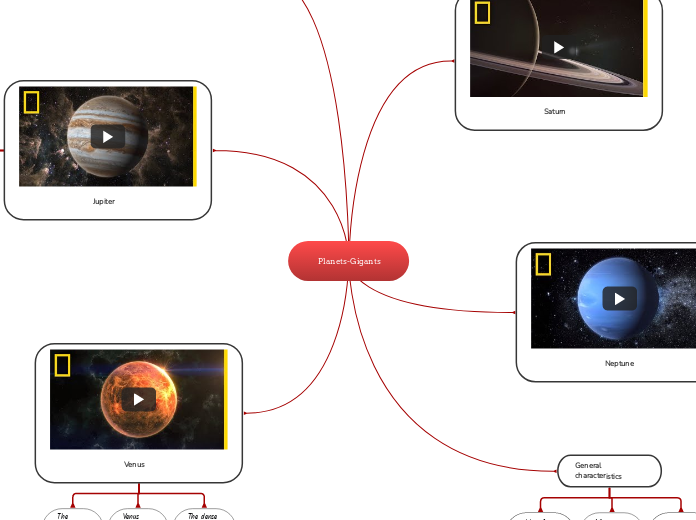Planets-Gigants
Saturn
Saturn is the planet with the lowest density among the planets of the solar system, two times lower than the density of water.^
On Saturn, there is a pronounced change of seasons. One season lasts for more than seven Earth years.^
Saturn has a not quite spherical shape. The speed of its rotation is so great that it flattens itself.^
Neptune
It is the eighth planet in distance from the Sun, the third among all in mass and the fourth in diameter.^
Neptune's atmosphere is made up of hydrogen and helium.^
The length of the day is 16 hours. The total revolution around the orbit of the Sun (Earth year) is equal to 165 Earth years.^
General characteristics
List of members: Venus, Jupiter, Saturn, Neptune.^
All planets are far from the Sun, and regardless of the nature of the change of seasons, they are always dominated by low temperatures.^
All planets have a huge weight and mass.^
List of members:
Venus
Jupiter
Saturn
Neptune
Jupiter
Jupiter is the leader of the planets in the magnetic field. Its magnetic field is about 20,000 times stronger than Earth.
^
Jupiter's atmosphere is mostly made up of hydrogen, helium, and traces of other gases. Hydrogen occupies most of the atmosphere and makes up 89% of the atmosphere and 10% of helium gas.^
Jupiter's core is one of the mysterious places to study, and there are many theories about the composition of the core. Many scientists believe that Jupiter's core is about 10 times smaller than Earth and contains mostly metallic hydrogen.^
Venus
The rotation of Venus in the circle of its axis is the opposite, which means that the sunrise on it occurs in the west, and the sunset in the east^
Venus rotates very slowly in a circle of its axis, one revolution is 243.02 Earth days.^
The dense and toxic atmosphere of Venus consists mainly of carbon dioxide (CO2 - 96.5%) and nitrogen (N2 - 3.5%) with clouds of sulfuric acid (H2SO4)^
